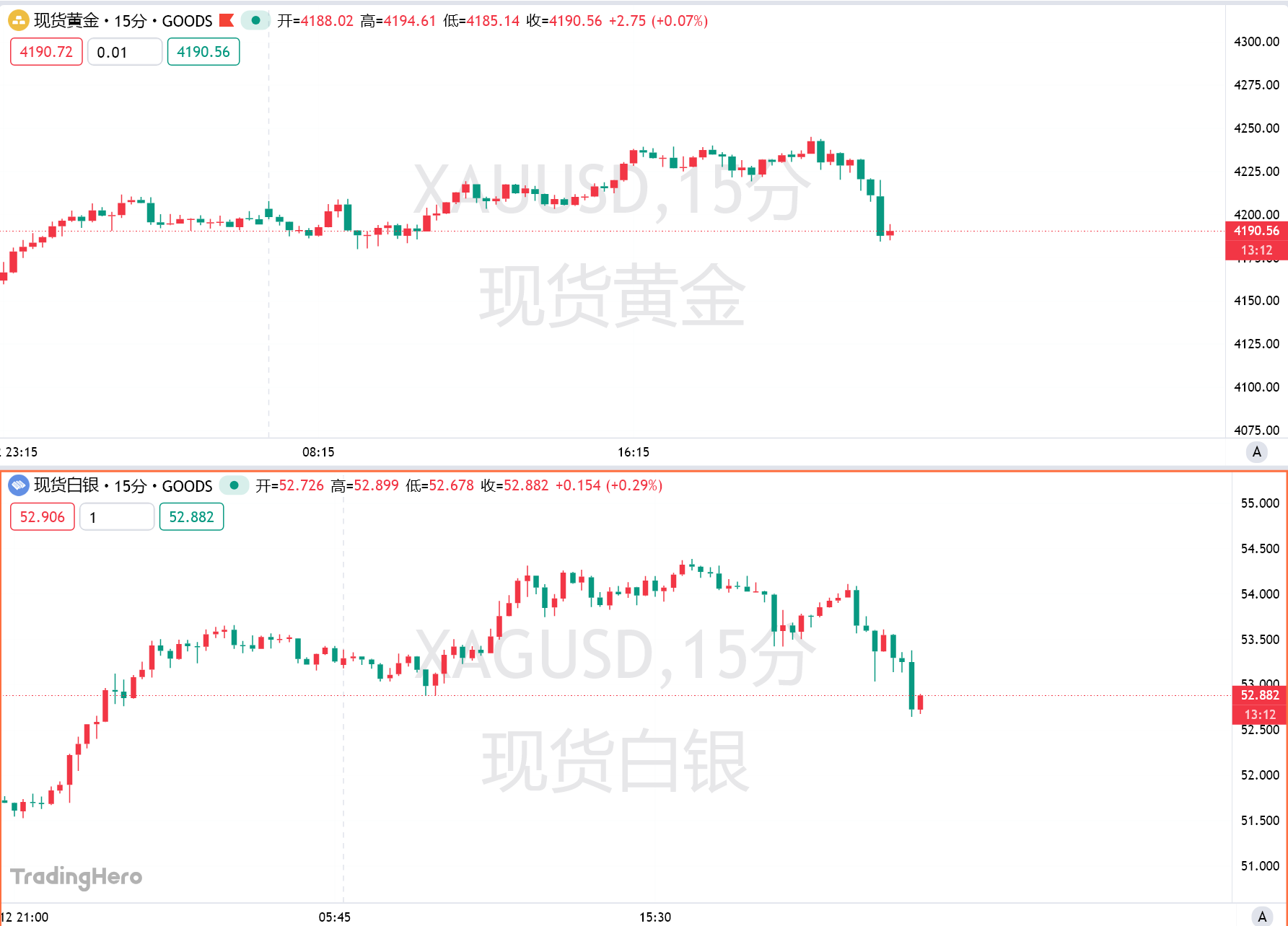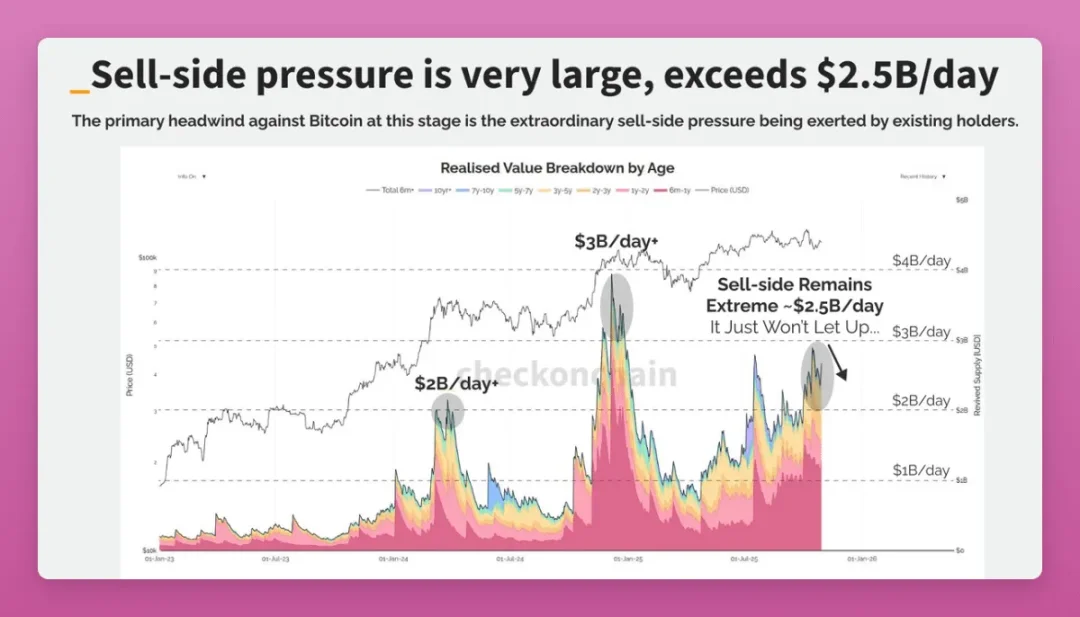The Federal Reserve pours cold water, December rate cut expectations plummet!
San Francisco Federal Reserve President Daly, who has consistently supported interest rate cuts, also sent a cautious signal on Thursday. Market expectations have quickly reversed, with short-term interest rate futures now showing only a 55% probability of a Fed rate cut in December...
Given concerns about inflation and signs of relative stability in the labor market after two rate cuts this year, an increasing number of Federal Reserve policymakers are signaling caution about further easing, causing market expectations for a December rate cut to drop to nearly 50-50.
Early in the US session on Thursday, spot gold gave up its intraday gains, dropping $16 in the short term and once approaching $4,180/ounce; spot silver turned to a 1% decline during the day, falling below $53/ounce.

As if to highlight this subtle policy stance, San Francisco Fed President Mary Daly—previously a staunch supporter of Fed rate cuts—said on Thursday that it is “too soon” to make a decision about the next policy meeting, which is about four weeks away.
“I am open-minded, but I have not made a final decision on my views yet. I look forward to discussing with my colleagues,” Daly said at an event in Dublin, Ireland.
The latest to support pausing rate cuts is Boston Fed President Susan Collins, who said on Wednesday that the “threshold for further rate cuts in the near term is relatively high.”
“Unless there is clear evidence of labor market deterioration, I will be cautious about further policy easing, especially considering the limited inflation-related information due to the government shutdown,” Collins said at a bankers’ meeting in Boston, adding that policy rates may need to “remain unchanged for some time.”
Collins has voted twice this year in favor of Fed rate cuts. Her unusually candid remarks indicate growing divisions within the Fed and reflect a lack of consensus on further rate cuts. Fed Chair Powell pointed out these challenges two weeks ago after the most recent rate cut, stating that another rate cut at the December 9-10 policy meeting is “far from certain.”
With Collins’ comments, plus White House guidance on Wednesday—that even if the US government reopens, official inflation and labor market data may not be available in time (or ever) before the next Fed meeting—the market has pulled back from its previous firm bets on a 25 basis point rate cut in December.
As the best real-time indicator of market expectations for Fed policy, short-term interest rate futures currently show that the probability of a Federal Open Market Committee (FOMC) rate cut on December 10 is only about 55%.
“Boston Fed President Collins’ clear opposition to a December rate cut increases our concerns about Powell’s ability to manage divisions within the FOMC and adds extra uncertainty to the rate path,” Evercore ISI Vice Chairman Krishna Guha wrote in a report on Thursday. “Her public and explicit opposition to a December rate cut indicates that if Powell tries to push for a rate cut, she is very likely to vote against it.”
Some data released by the private sector, and originating from the Fed’s own surveys, may support the view of keeping rates unchanged at the next meeting.
Apollo Global Management’s Chief Economist Torsten Slok estimates that 55% of the goods that make up the Consumer Price Index (CPI) have price increases exceeding 3%. The Fed’s inflation target is 2%.
“This is why it is difficult for the Fed to cut rates in December,” Slok wrote on Wednesday.
However, White House National Economic Council Director Hassett said on Thursday that he does not see many reasons not to cut rates. He expects fourth-quarter GDP to fall by 1.5% due to the government shutdown.
In addition, Hassett said that the October nonfarm payroll data release does not include the unemployment rate, so people will never know what the unemployment rate was in October. The September employment report may be available next week.
He said: “The household survey was not conducted in October, so we will only get half of the employment report. We will get the jobs part of the data, but not the unemployment rate, and this situation will only last for one month.”
The US nonfarm payroll report consists of two surveys—one of businesses (producing the main nonfarm payroll number) and one of households (responsible for the unemployment rate). While many businesses keep records and report data electronically, it will be much harder to retrospectively contact workers and ask them to recall their employment status for a specific week in October.
Disclaimer: The content of this article solely reflects the author's opinion and does not represent the platform in any capacity. This article is not intended to serve as a reference for making investment decisions.
You may also like
Mars Morning News | ZCash shielded pool assets reach 23% of total supply, network usage surges
The potential end of the U.S. government shutdown means the SEC and CFTC will resume crypto regulatory work. The SEC may prioritize support for tokenization businesses, while the CFTC plans to promote spot crypto trading. The Hello 402 contract has been exposed to risks of unlimited issuance and centralized manipulation. The probability of a Fed rate cut in December is 69.6%. Summary generated by Mars AI. The accuracy and completeness of this summary are still being iteratively updated by the Mars AI model.

Has sector rotation in the crypto market really failed?
With BTC maturing first, ETH lagging behind, and SOL still needing time, where are we in the cycle?

Prospects of Ethereum Protocol Technical Upgrade (1): The Merge
This article will interpret the first part of the roadmap (The Merge), explore what technical design improvements can still be made to PoS (Proof of Stake), and discuss ways to implement these improvements.

DYDX Boosts Market Moves with Strategic Buyback Decision
In Brief DYDX increases revenue allocation for token buybacks from 25% to 75%. Price gains expected due to reduced supply pressure and strategic decisions. Increased buybacks viewed as a crucial financial strategy amidst volatile conditions.

